After 40 years, Bricktown has become more than just a tourist destination
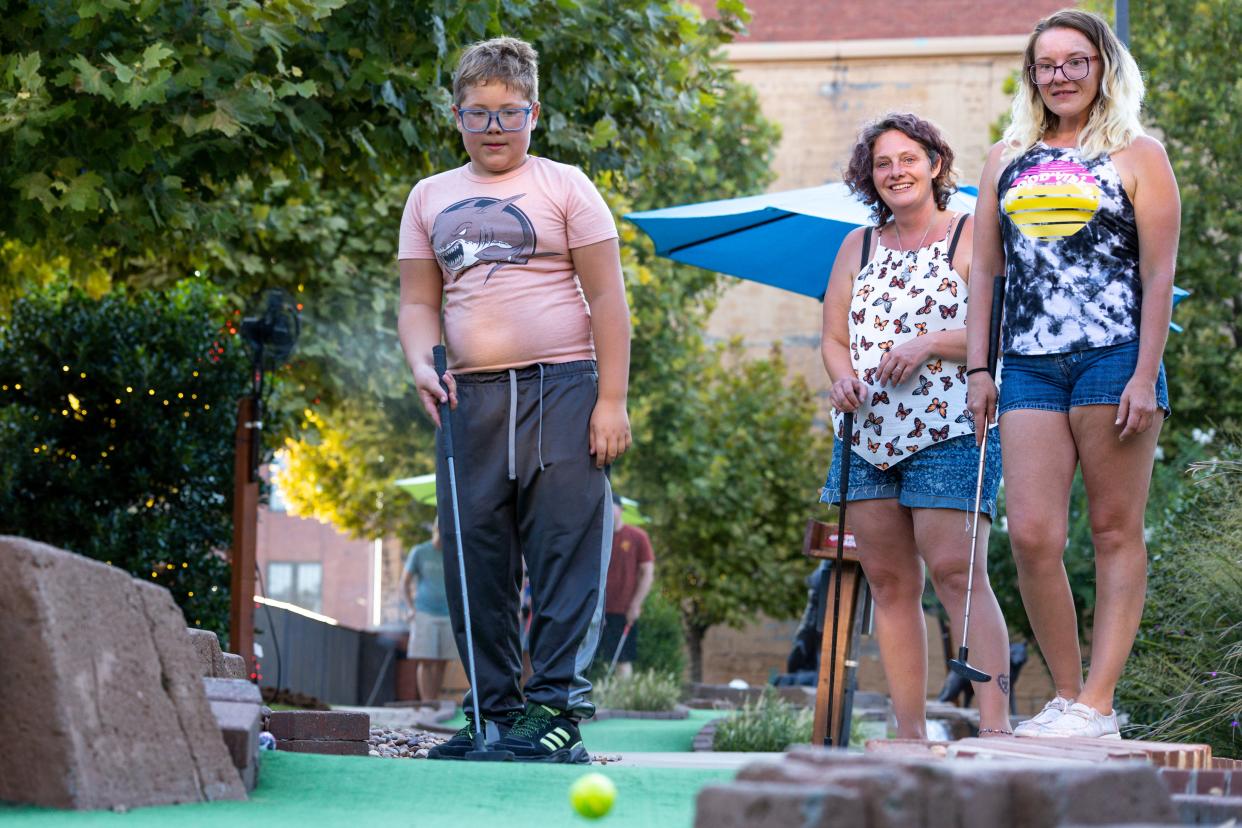
- Oops!Something went wrong.Please try again later.
The first-ever in-depth look at Bricktown reveals a district that is more than just a tourist destination and is increasingly home to an affluent workforce and population.
The report by economist Russell Evans, commissioned by Downtown OKC Partnership, comes out on the 40th anniversary of the district emergence when the late Neal Horton completed renovation of two buildings as he sought to redevelop a forgotten collection of early 20th-century brick warehouses east of the central business district.
The study concludes the district is one of the city’s top tourist draws, with its hotels, restaurants and entertainment venues attracting 1.8 million visitors who spend more than $175 million on the local economy.
But Evans’ research also shows Bricktown is also home to 280 households representing $15 million in income. And the district’s workforce totals more than 4,600 people with over half of the jobs requiring an advanced education with monthly salaries topping $3,333.
Justin O’Neal, Bricktown program manager with Downtown OKC Partnership, credited the study with providing a better understanding of the district and its future potential.
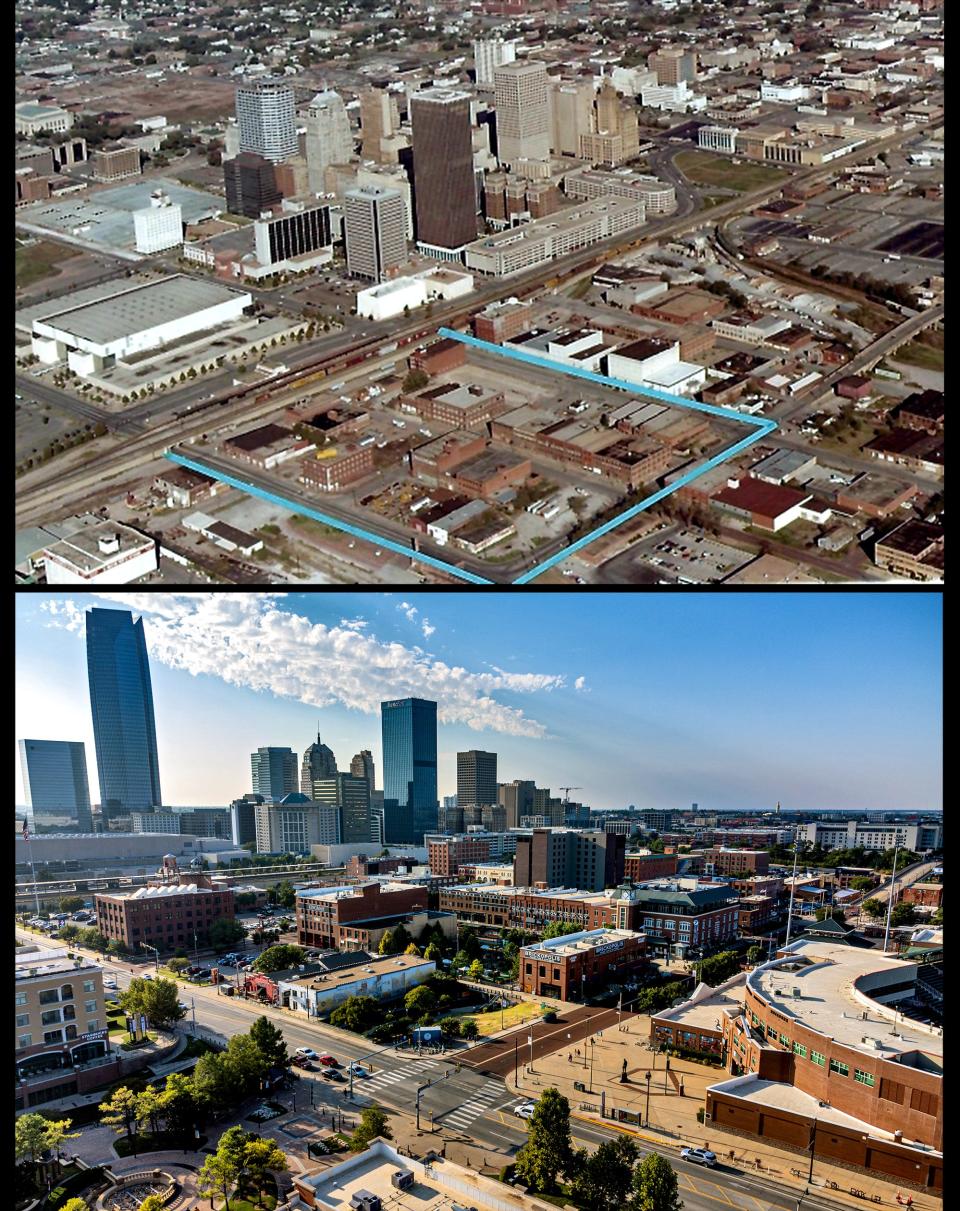
“Being able to identify the workforce and being able to incorporate that into the tourism numbers,” O’Neal said. “Visitor tracking software has come so far that we’ve been able to see that traffic in the district. But you don’t see the things that are here every day, what we take for granted.”
The study is the first step being taken by the district’s property and business owners to develop a long-term strategic plan. Chad Huntington, the outgoing chair of the Bricktown Association and owner of the Bricktown Water Taxis, said the COVID-19 pandemic alarmed the district about its perceived reliance on tourism.
More: OKC City Council approves $200M for upscale apartment towers in Lower Bricktown
“I often joke we are the most touristy thing and the most touristy district,” Huntington said. “New York can have Times Square and completely give it over to tourists and that’s OK. There’s still plenty of city for the locals. Oklahoma City will never be so tourist heavy that it can have a throw-away district. Bricktown needs locals just as the city needs Bricktown.”
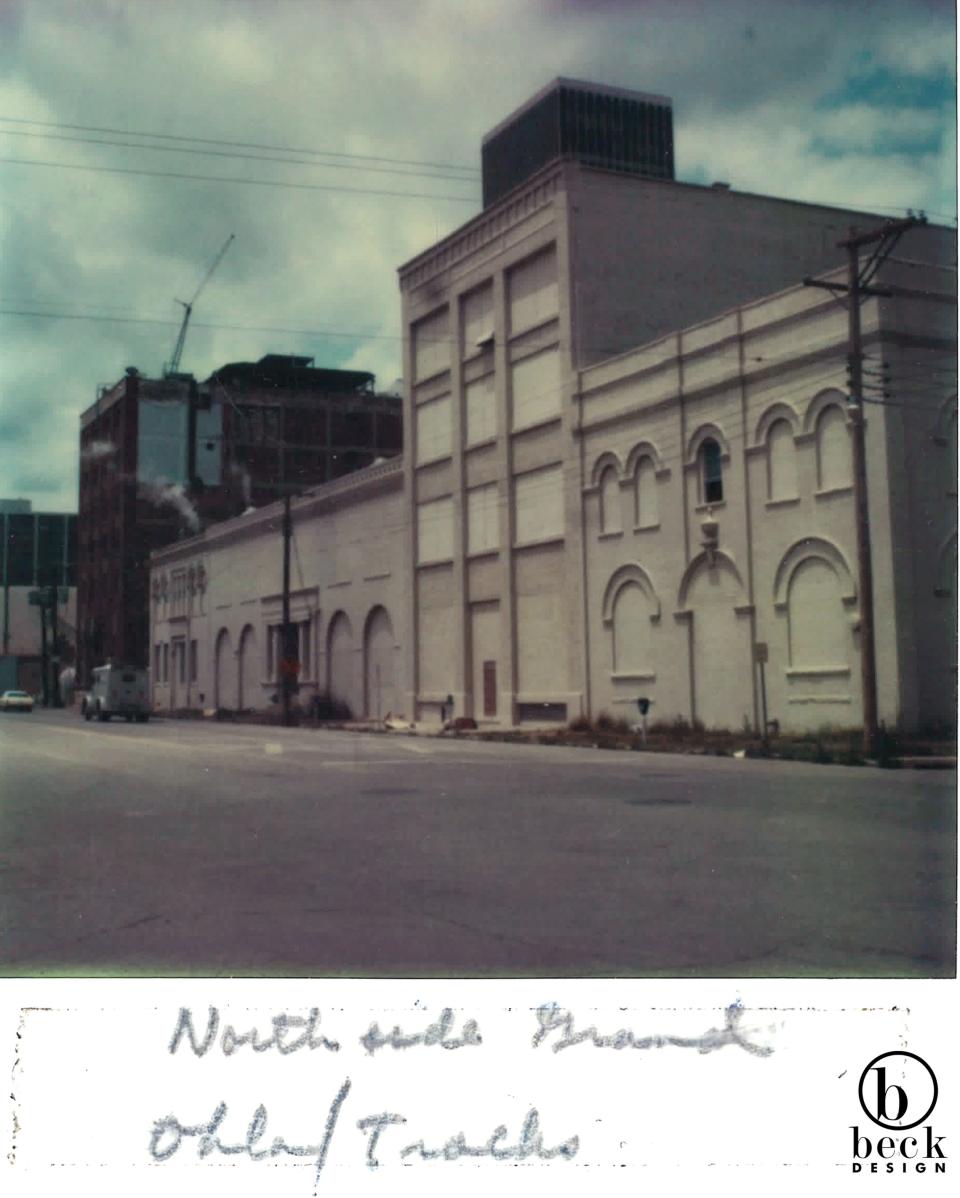
Is Bricktown growing into its original master plan?
Bricktown got its start in 1898 when federal troops, established in the area after the 1889 Land Run, departed and gave the property to the city for industrial development along with a park and school. The school was located where the Chickasaw Bricktown Ballpark now stands while the park was located on what is now the ballpark’s parking lot.
The district went into a steep decline starting in the 1960s. Horton created a master plan in 1979 and started acquiring properties in the early 1980s. He completed renovation of two buildings along Sheridan Avenue in 1983 but lost everything when the oil bust forced him into bankruptcy.
The master plan Horton drew up called for a mixed-use district that would attract locals and tourists with a collection of small retail shops and local restaurants, offices and hotels. A handful of property owners arose in Horton’s place, most notably Jim Brewer, who saw an opportunity to focus the district on entertainment, dining and nightlife.
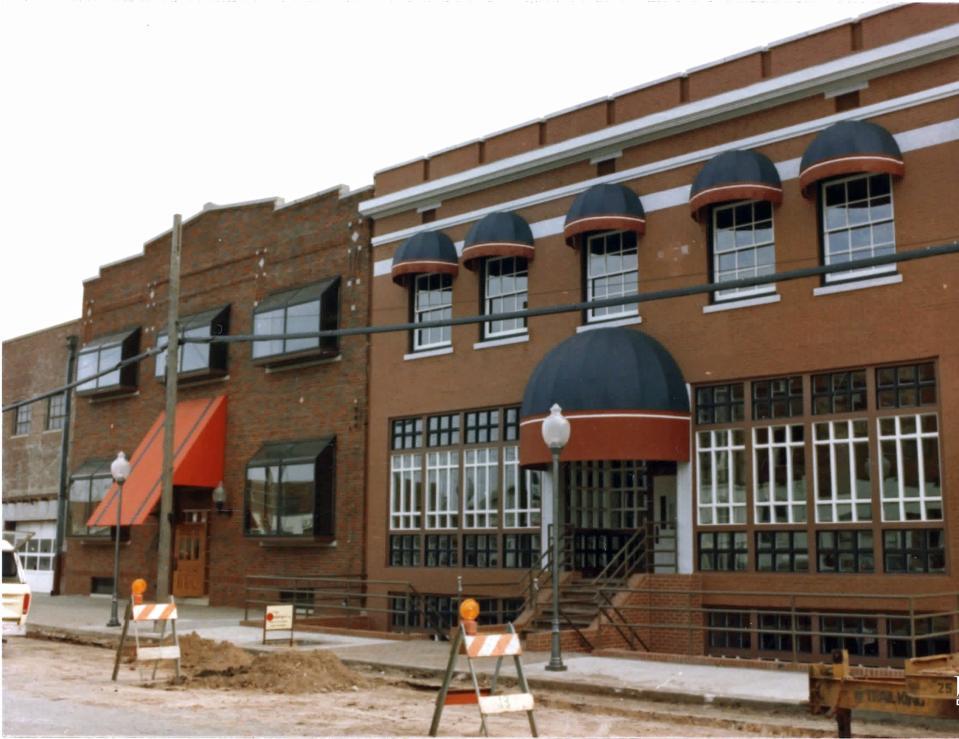
When the first MAPS tax was passed, Bricktown was Oklahoma City’s only up-and-coming entertainment district, and voters agreed to invest in its future by making it home to a new ballpark and a riverwalk-style canal.
Bricktown, Evans wrote, is rooted in destination placemaking, a concept Brewer pursued in the early 1990s as he sought to persuade people to visit an old warehouse district.
In addition to the water taxis, shops, restaurants and bars, Bricktown’s attractions in 2023 include the American Banjo Museum and Jim Thorpe Museum, the Brickopolis entertainment center and miniature golf, Revolutions bowling amusement center, Harkins Theaters and the Silos Climbing Gym.
“The current placemaking in Bricktown emphasizes the fostering of quality public spaces that are both dynamic and ever evolving as well as promote arts, culture, and creativity,” Evans wrote. “These efforts have made Bricktown a vibrant and attractive destination, with its historic charm, vibrant entertainment district, scenic waterfront, iconic landmarks, and family-friendly attractions.”
How Bricktown, one of OKC's most popular tourism districts, bounced back from the pandemic
Evans’ study coincided with Bricktown surviving a crippling economic shutdown triggered by the COVID-19 pandemic in 2020. The water taxi rides came to a halt. The NBA season ended when Rudy Gobert, then with the Utah Jazz, tested positive for COVID-19 just before a game in Oklahoma City against the Thunder.
“Bricktown’s reliance on tourism really did take a massive hit,” O’Neal said. “Nobody was staying in the hotels, and it was very hard to eat at restaurants.”
Evans’ study shows Bricktown didn’t really turn into a ghost town when the pandemic hit. The district’s residential base consists of the Steelyard, a 250-unit, pet friendly apartment complex, and 30 condominiums at the Centennial. Using data from the U.S. Census Bureau, Evans calculated Bricktown household incomes totaled $16.5 million.
All of Bricktown’s hotels reopened and most of its restaurants are back in business after a fading of the worst of the pandemic. The latest data for its workforce from 2019 shows the employee count totaled 4,626 in 2019. Of those jobs, the leading category, professional, scientific and technical industry employed 658.
“The workforce was definitely surprising,” Huntington said. “We all kind of knew there were offices, but it’s different actually having these numbers as you look at potential development opportunities.”
Evans’ report on jobs starts in 2009 when jobs earning $1,250 per month or less accounted for 40% of the Bricktown workforce. That number dropped to 30% by 2019, while those earning more than $3,333 a month climbed from 25% of the workforce in 2009 to 40% in 2019.
The educational attainment of the workforce also skews higher with 2021 census data calculated by Evans showing 31.8% have some college or an associate degree, 24.5% have a bachelor's or advanced degree, 29.6% have a high school diploma, and 14.1% have no diploma.
The same census data was used to determine 42% of the Bricktown workforce is employed in professional fields, 11% in administrative and support services, and 13% in retail and trade services.
The 2021 census data was used to calculate that 2,347 are employed in Bricktown. After adding indirect jobs related to the district, Evans concludes in his study that Bricktown’s direct and indirect employment totals 4,043 jobs with an income totaling $287 million.
Andy Burnett, who developed the Mideke Building, home to Heartland, believes Bricktown provides an edge for companies trying to convince employees to return to the office post-pandemic. The building is home to 300 Heartland employees while the ground floor is occupied by All About Cha, a breakfast through dinner restaurant and coffee shop.
“An employer trying to convince their people to come back to the office needs to make it compelling for their employees,” Burnett said. “It needs to be fun. Bricktown has so much to offer employees and employers.”
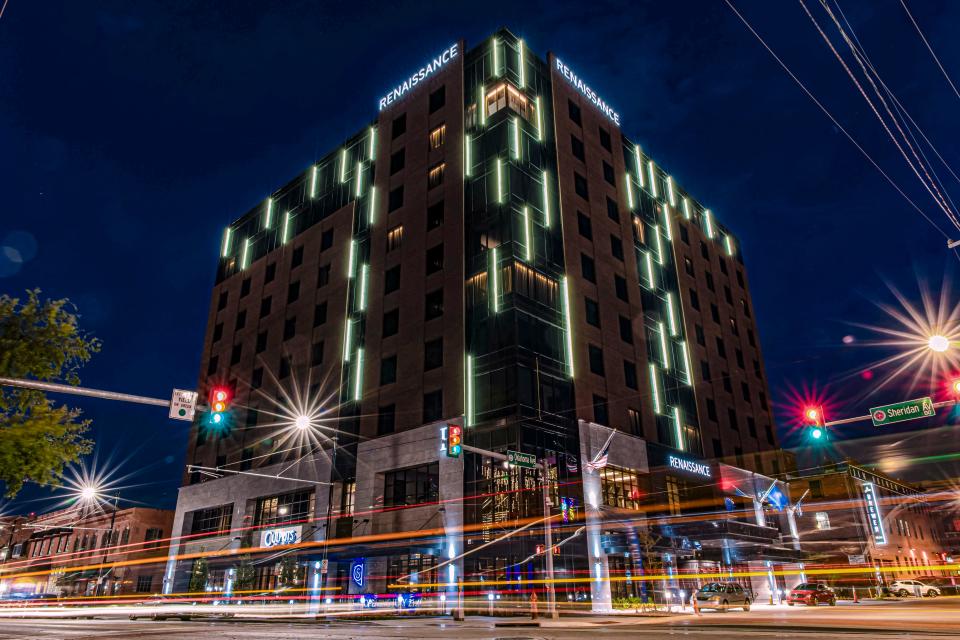
Bricktown is changing, but play remains a priority
A snapshot of Bricktown by Evans taken in 2021 reports Bricktown emerged from the pandemic with much of its hospitality, dining and entertainment intact. Bricktown’s mix included 35 restaurants, 16 bars, 14 entertainment venues and nine hotels (the number increased to ten last year with the opening of the full-service Bricktown Renaissance Hotel).
Evans estimates 59% of the 1.8 million visitors were overnight stays in Bricktown, a segment that accounts for 80% of visitor spending due to the additional cost of lodging. Evans estimates the economic impact of tourism in Bricktown totaled $175 million.
As of the release of the report, the “play” side of Bricktown continued to show signs of ongoing growth. Plans were filed with the city on Tuesday showing an investor group wants to build an eight-story hotel with a cafe and lounge next to the Brickopolis miniature golf course along the Bricktown Canal.
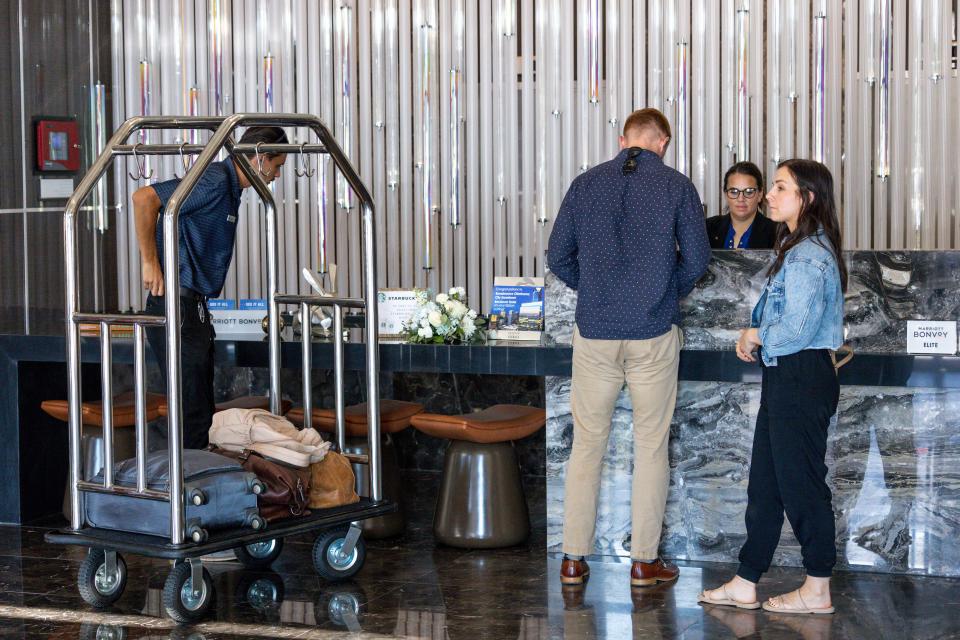
Developer Scot Matteson, meanwhile, was recently allocated a record-high $200 million in tax increment financing for a development that, if built, would substantially change the district’s mix of housing.
The Boardwalk at Bricktown as designed will have 924 apartment units, 80,000 square feet of retail, restaurants and entertainment spread out among three 28-story towers. The project also includes two parking garages and a Hyatt Dream Hotel.
More: What we know: 8-story hotel proposed along Bricktown Canal next to miniature golf course
“Game changer is thrown around an awful lot when projects come online,” Huntington said. “There’s no way that something of the scale that’s being proposed doesn’t have a direct life on daily life in Bricktown — a direct positive impact. I think just putting more people in the district on a 24/7 district will be very positive for Bricktown.”
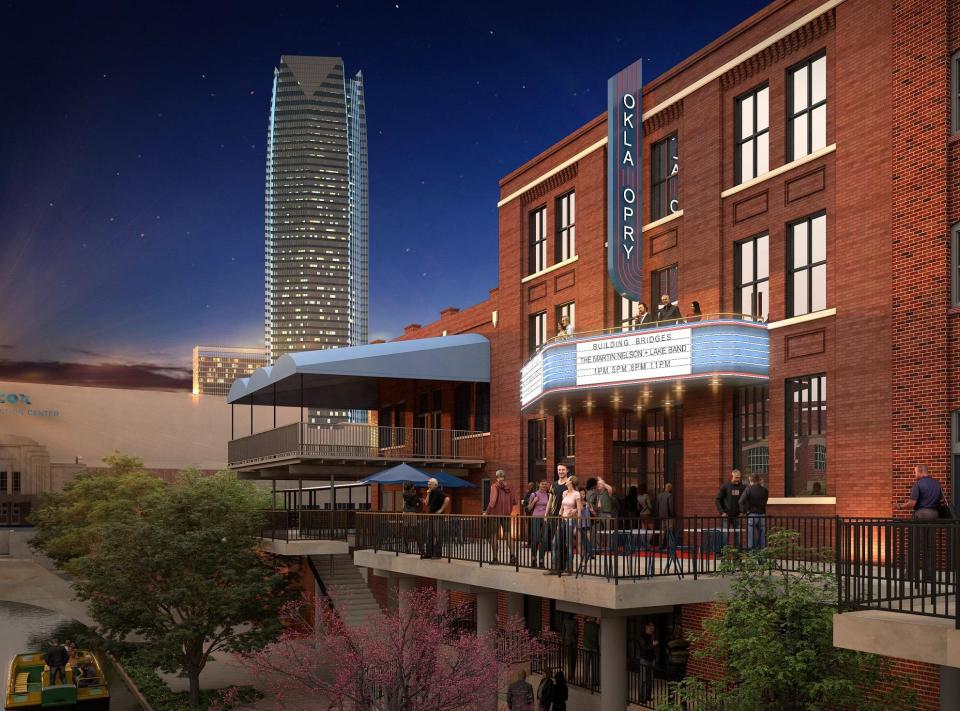
Live entertainment includes concerts at the Criterion, shows at the Bricktown Comedy Club, music and dancing at Oklahoma Ranch, and live music at smaller venues throughout the district. College students are learning the business, performance and marketing side of music at ACM@UCO.
More live music venues are coming with construction underway on The Truck Yard, a restaurant, bar, food truck court and entertainment stage being built next to the Land Run Monument. The Oklahoma Opry, meanwhile, recently moved its operations to ACM@UCO and is fundraising to renovate an adjoining warehouse at 19 E California Ave. into its new home.
Despite the growth of the district, two visible landmark buildings in the district, once anchors, are now languishing under new owners who bought the former homes of Chelino’s and Spaghetti Warehouse promising redevelopment but then not following through.
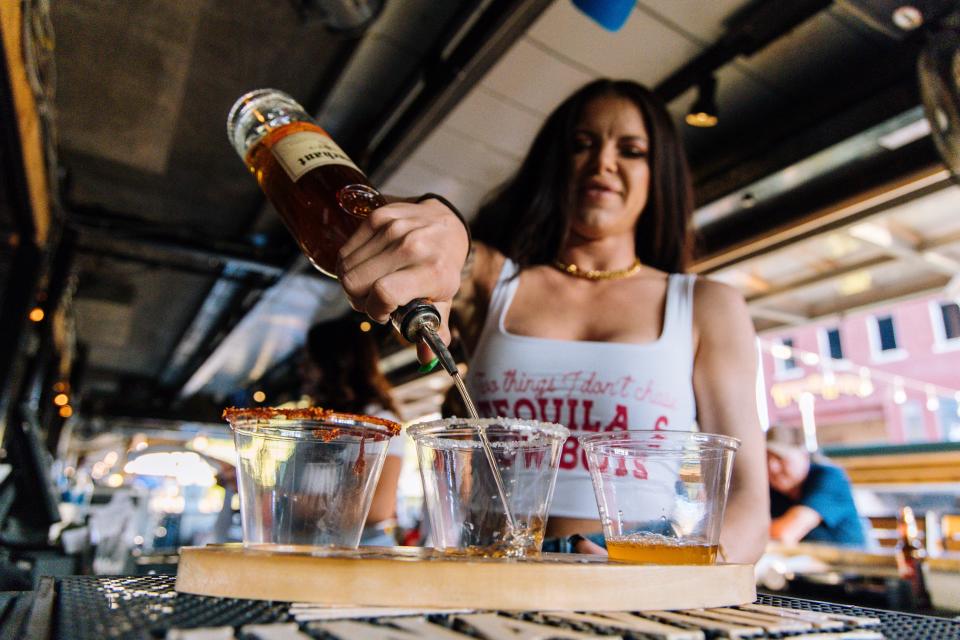
Kristen Vails, director of place management at Downtown OKC Partnership, believes the economic impact plan, which will be followed by a strategic plan and market study, can spur new interest in the Chelino’s and Spaghetti Warehouse properties.
“As you look at potential development opportunities like Chelino’s, there is more opportunity there,” Vails said. “For someone who is thinking about a development opportunity, it doesn’t just have to be a restaurant. It can be a restaurant or attraction on the bottom floor with a lot of potential for residential or offices on top of that.”
Burnett believes the Evans study is critical to guiding Bricktown's future growth — a growth that values tourism while maintaining an authenticity with a full-time workforce, residential population and attractions that are equally popular with locals.
"Bricktown is healthiest when it's not dependent on tourists," Burnett said. "Office employees provide stability for the restaurants and retailers. Services will fill in around stable employment centers."
This article originally appeared on Oklahoman: Bricktown OKC not just a tourist spot: People are moving there, too

